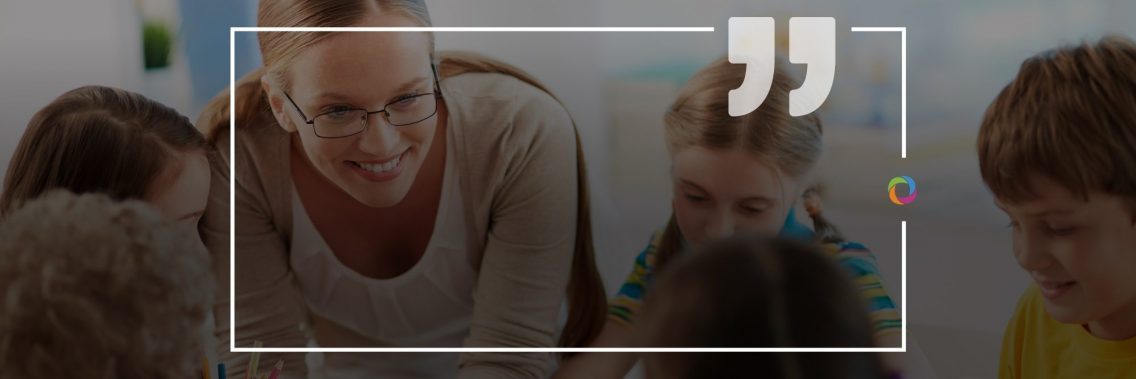The shortage of teachers has been a serious topic for most countries over the last few decades. However, since COVID-19 hit the education sector hard in early 2020, sending millions of pupil home and disrupting the learning process, the burden borne by teachers has become even more onerous. With vaccine programs rolling out in most nations, teachers were among the first in line being among those for whom a ‘green pass’ is an absolute requirement although not all agreed to have it. With this in mind, burning out and leaving the teaching profession have become real problems. We asked several experts about the consequences of and the solutions to address the global teacher shortage.
Key Takeaways
-
- Younger and less experienced teachers are more engaged with the online environment but miss out on the experience sharing process enjoyed by their in-school older colleagues
- Enrolment in private schools has decreased leaving teachers with lower salaries
- COVID had changed the way education is delivered; societies have to adapt by changing policies to maintain the growth in literacy rates
- Lockdowns may have a positive effect for the system providing progressive policies and solutions are identified, piloted, and implemented across educational systems

“There has been an unprecedented demand for teachers which is surprising because they have to do double the workload in the current conditions. Within days and with no appropriate training, they were required to pivot from face-to-face teaching delivery to re-purpose it for tech style and online lessons. This has involved a heightened cognitive strain on teachers to perform in a way that is not in line with their training. At the same time, the digitalization of the learning process has affected the need to emotionally connect with children. Both of these extremely rapid changes have brought complex demands for both older and younger teachers. The latter are coping better in some sense due to their agility with technologies, but they are missing out on the mentoring they would have received if in school. Further to this, many schools have not been able to find teachers for relief work or long-term positions as teachers choose to stay at home, feeling very scared of catching COVID-19 while working on the front line. The nature of teaching is very physically interactive and classrooms are closed environments and COVID can be spread much more easily simply by the design of rooms. Teachers have been instructed to take off their masks while presenting but this also posts problems regarding exposure and contraction. Discussion groups across social media worldwide have indicated the hesitancy of teachers to return to the workforce and choosing to extend leave or choose online employment rather than work face to face. I have seen this directly in Australia and USA.”

“Teaching (when well done) is very difficult to do over the short term or, sometimes, in separate sections. Relationships have to be formed and knowledge built up in connected sections. Many teachers are very resilient but constant changes such as lockdowns and other interruptions break down sequential learning. The deaths of either teachers or students or relatives can be very disheartening. Planning and program sequencing have been problematical.”
What are the most serious consequences of there being a shortage of teachers?

“Schools are strained by having to rely on internal staff to cover staff on sick leave and this has really internally affected the overall situation in schools. I have seen many teachers suffering burnout with the extra demands placed on them to complete planning, give assessments and follow their children’s learning both face to face and then adjust all of this approach to online delivery. Teachers have had to take on more students and have had less time to prepare and part of teachers’ work standards is that they are supposed to have time away from face to face. This has had to be provided through creative approaches in the class such as one teacher teaching two classes. School enrolments in independent and private schools have dropped and thus schools have less money to pay for teachers to provide relief in schools. There has been a strained cycle of unavailable quality teachers and funding to provide the support. Teachers have turned to new careers to ensure more regular employment. We are seeing big movements into other sectors than education.”

“As far as I can see schools are going to have to use computers and websites much more. This may be difficult in places where students come from poor homes and also breaks down some of the friendly interactions that take place in successful classrooms.”
What policies should be adopted to change this situation?

“Teachers need to be more valued in society. Policies would benefit from looking at the breakdown of responsibilities teachers have in their roles and removing a number of those that limit their central task, that of teaching children. As our societies change, the pedagogy and delivery of education continue to remain the same. The teacher is the central aspect of every running classroom and this pressure is too high for any individual to sustain long term. I think policy needs to adopt a more student-centered learning approach that empowers the learner. Naturally, when we have the choice to answer our own questions and seek information in approaches that suit our personality and learning style, we will also enjoy our learning. Schools presently require the teacher to be the holder of all information and I see this model becoming redundant since COVID highlighted that we require a new way to learn. As due to COVID or floods or heavy snowfalls children are at home waiting for their teacher to reinforce them, meet with them and guide them, there is a resonating gap in time and their needs being met. Policies need to enable and train teachers to give children the tools to set up their learning and seek answers with an independent approach, with the teacher still essential in a way of supporting them and guiding them when they call out for help. If we plan in this way as teachers, this bottleneck could be avoided now with COVID and with other situations arising in the future. Paramount changes need to be implemented at policy levels to empower learners across the globe and let teachers do what they do best and guide learning from the sidelines. I think this would bring more teachers back to the education sector and by being a support to learning that they could professionally sustain for their career, avoiding burnout by being the central attention of each class. COVID has impacted on education to the point that we have turned a new chapter and we can’t continue to work with the previous systems we have stuck to for so many years.”

“I am beginning to see a few projects emerging that are considering how best to merge electronic communication with classroom meetings. There may well be a number of problems such as:
- The need to work more closely with parents (some parents may not have time to collaborate and others will not have a sound understanding of how children learn or the subject knowledge or sufficient time to give to their children).
- Some homes may not be conducive (i.e., noisy, without the proper electronic devices, too small) so that children cannot find a quiet space to work. If parents are not present, learners may spend time outside playing or exploring (possibly such activities can be included in TV-based lessons)
All of these issues and others, yet to emerge, need to be subject to investigation and sooner rather than later.
These are my early thoughts – there needs to be some good quality pilot projects in several different countries where these issues are explored and ideas are discussed and developed. It may be the case that schooling could emerge better than it was before – we have, after all, been shutting children in classrooms for over 200 years (in some countries) and we may develop educational practices that are an improvement. Funders should develop a number of new studies which address these issues and which are compared and discussed.”

“The pandemic arrived just as education was beginning to undergo a fundamental transformation, made necessary and possible by information and communications technology, responding to the current tangible cum virtual duality. The ‘school’ as we know it is a creature of the (first) industrial revolution. Just as there is now just the one worldwide library, with the information contained in a score of 20th-century libraries available at the touch of four fingers, so there is now – in many senses – emerging the ‘global school’. As Professor Philip Uys and I have set out in several readily-accessible books, journal articles, and conference publications, one basic change is that, from lower secondary onwards, the learners should lead. Teachers, in this transformed situation, can come into their own in providing support and encouragement – but are no longer involved in controlling, accrediting, or punishing. The profession may be highly-qualified, honored and respected – and reasonably remunerated – and, as the technology becomes progressively more pedagogue-friendly, needs no special internet skills (sighs of relief in common rooms worldwide).”
Check out more than 250 job opportunities in the Education sector here.

